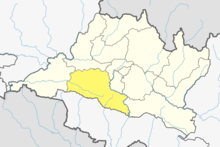
The Kingdom of Nepal was a Hindu kingdom in South Asia, formed in 1768 by the expansion of the Gorkha Kingdom, which lasted until 2008 when the kingdom became the Federal Democratic Republic of Nepal. It was also known as the Gorkha Empire, or sometimes Asal Hindustan. Founded by King Prithvi Narayan Shah, a Gorkha monarch who claimed to be of Khas Thakuri origin, it existed for 240 years until the abolition of the Nepalese monarchy in 2008. During this period, Nepal was formally under the rule of the Shah dynasty, which exercised varying degrees of power during the kingdom's existence.

Maharajadhiraj Prithvi Narayan Shah, , was the last king of the Gorkha Kingdom and first king of the Kingdom of Nepal. Prithvi Narayan Shah started the unification of Nepal.

The Gorkha Kingdom was a member of the Chaubisi rajya, a confederation of 24 states, located at the intersection of Himalayas and the Indian subcontinent. In 1743 CE, the kingdom began a campaign of military expansion, annexing several neighbors and becoming present-day Nepal. The Gorkha Kingdom extended to the Marshyangdi River in the west, forming its border with the Kingdom of Lamjung. To the east, the kingdom extended to the Trishuli River, forming its border with the Nepal Mandala. The Gorkha Kingdom was established in 1559 CE by Prince Dravya Shah, the second son of King Yasho Brahma Shah of Lamjung. The prince replaced the King Mansingh Khadka Magar who previously ruled the region.
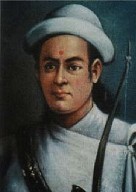
Balbhadra Kunwar Chhetri was a Gorkhali military commander and administrator in the Kingdom of Nepal. He is one of the National heroes of Nepal. He was highly praised for his military skill for the defence of Nalapani fort in the Anglo-Nepalese War (1814–1816). He was a captain in the Nepalese military and was tasked as commander to protect the forts of Dehradun.

The unification of Nepal was the process of building the modern Nepalese state, from fractured petty kingdoms including the Baise Rajya and the Chaubisi Rajya, which began in 1743 AD. The prominent figure in the unification campaign was Prithvi Narayan Shah, King of Gorkha. On 25 September 1768, he officially announced the creation of the Kingdom of Nepal and moved his capital from Gorkha to the city of Kathmandu.
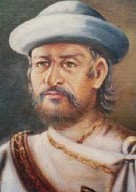
Basnyat/Basnet family or Basnyat/Basnet dynasty was a Khas-Chhetri and a warlord clan family involved in the politics and administration of the Gorkha Kingdom and Kingdom of Nepal. This family got entry into Thar Ghar aristocracy group of Gorkha at the time of King Prithvi Narayan Shah. It was one of the four noble families to be involved in active politics of Nepal together with Shah dynasty, Pande family and Thapa dynasty before the rise of Rana dynasty. This family is descended from Shivaram Singh Basnyat, the commander of Gorkhali forces and a member of Shreepali Basnyat clan of Gorkha. This family was maritally linked to Kala (Black) Pande section of Pande dynasty through Chitravati Pande who married Kaji Kehar Singh Basnyat. This family was the last Kshatriya (Chhetri) political family to be wiped out from the central power by Jung Bahadur Rana of Kunwar family during the Bhandarkhal Massacre in 1846 for the conspiracy to take the power leading to people suffering from the Rana rule for 104 long years.
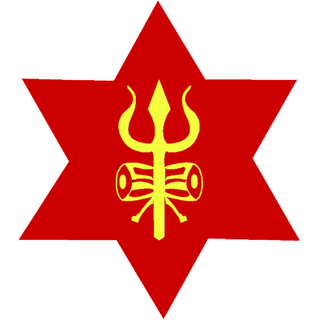
The Nepali Army, also referred as the Gorkhali Army, is the land service branch of the Nepali Armed Forces. After the Gorkha Kingdom was founded in 1559, its army was established in 1560, and was accordingly known as the Gorkhali Army. The army later became known as the Royal Nepali Army (RNA) following the Unification of Nepal, when the Gorkha Kingdom expanded its territory to include the whole country, by conquering and annexing the other states in the region, resulting in the establishment of a single united Hindu monarchy over all of Nepal. It was officially renamed simply to the Nepali Army on 28 May 2008, upon the abolition of the 240-year-old Nepalese monarchy, and of the 449-year-old rule of the Shah dynasty, shortly after the Nepalese Civil War.
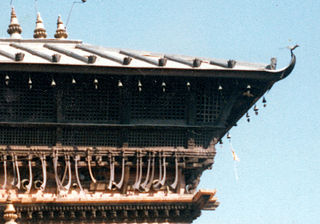
The Battle of Kirtipur occurred in 1767 during the Gorkha conquest of Nepal, and was fought at Kirtipur, one of the principal towns in the Kathmandu Valley. Kirtipur was then a walled town of 800 houses and part of the kingdom of Lalitpur. It is spread along the top of a ridge.

The Battle of Kathmandu or siege of Kathmandu or siege of Kantipur occurred during the Unification of Nepal. It was fought in Kathmandu in 1768, and resulted in the defeat of its king Jaya Prakash Malla by conquerors Prithvi Narayan Shah, king of the adjoining Gorkha Kingdom.

The Battle of Bhaktapur was the final campaign in the Gorkha conquest of Nepal. It took place in Bhaktapur in 1769, and resulted in the victory of the Gorkhali king Prithvi Narayan Shah, giving him control of the entire Kathmandu Valley and adjoining areas.

The Battle of Lalitpur in 1768 ended with the Gorkha conquest of Lalitpur, one of the three kingdoms in Nepal centered in the Kathmandu Valley, and the loss of the rule of the native Newars.

Vamshidhar Pande known by Alias Kalu Pande was a Nepalese politician and military general who was appointed as Kaji of The Gorkha Kingdom. He was born in 1713 A.D. in Gorkha family. He was the commander of the Gorkhali forces during the Unification Campaign of Nepal who died in the first Battle of Kirtipur in 1757 A.D. Pande's real name was Banshidhar Pande. He was a son of Kaji Bhimraj Pande who was minister during reign of King Prithivipati Shah of Gorkha. He was descendant of Minister of Gorkha and Dravya Shah's accomplice Ganesh Pande. He had three sons: Dewan Kajisaheb Vamsharaj Pande, Sardar Ranasur Pande and Mulkaji Sahib Damodar Pande.
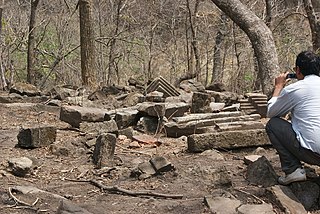
Chandrabhoga Gadhi is a historical ruins fort located in Shambhunath, Saptari District, Nepal. The ruins fort is located in the Rupani- Shambhunath Chure hill section north west of Kanakpatti village around 4 km. The hill fort was originally built by the Senas of Makwanpur in the 15th century. The temple of Chandrabhoga- clan deity of Sena was built by 27th Sena King Chandrasen. The fort is locally known as Chanarbhoga Gadhi and is believed to be the remnants of the Ekagarh, the palace of Sen Kings during winter season.

Ram Krishna Kunwar or Ramakrishna Kunwar was a military commander (Sardar) of Gorkha Kingdom during the Unification of Nepal at the reign of King Prithvi Narayan Shah. He was born circa 1728 AD to Ashiram Kunwar in the Kunwar family. His descendants went on to found the Rana dynasty of Nepal. He was a successful general in King Prithvi Narayan Shah's unification campaign of Nepal. He defeated British forces at Hariharpur Gadhi on 25 August 1767. He died in the Mechi Campaign in 1771 A.D.

Vamsharaj Pande was a Nepalese politician, military officer and minister of state. He was a significant army commander of Kingdom of Nepal in the second half of 18th century. He was a follower of Bahadur Shah of Nepal and had a significant rivalry with Swaroop Singh Karki.
Battle of Khurbura or Battle of Khudbuda also known as Gorkha-Garhwal War occurred in May 1804 near modern-day village of Dehradun, Khurbura 30.3256°N 78.0267°E. The battle is regarded as the first major attack in the history of Garhwal Kingdom that triggered between Kingdom of Nepal forces and Maharaja Pradyumna Shah, and continued for 13 days until the Garhwal king was defeated. It is chiefly regarded the only defeat of Pradyumna Shah's life and the victory of Gorkhali forces under Kingdom of Nepal.

The Battle of Nuwakot also called Siege of Nuwakot or Invasion of Nuwakot was fought in Nuwakot in 1744. Nuwakot was controlled by the Kingdom of Kantipur and it was an important location as it had a trade route to Tibet. The Gorkha Kingdom previously attacked twice by Nara Bhupal Shah and his son Prithvi Narayan Shah respectively. To prepare for the war Prithvi Narayan Shah visited Varanasi to get war materials, ammunition, acquire weapons, train the soldiers, and Pilgrims. He improved his army personnel and included people from any caste including the blacksmiths, cobblers, sweepers, Damai, and anyone who was bodied and physically fit was able to join the crew.
Battle of Makwanpur was fought on 20 January 1763 in Makwanpurgadhi, Gorkha Kingdom between the Gorkhas and the Nawab of Bengal. The Muslims fled Makwanpur, resulted in Gorkhali victory, and the first victory of Gorkhas against overseas soldiers.
Battle of Makwanpur was fought on 28 February 1816 in Makwanpurgadhi, Nepal between Nepal and the East India Company. It resulted in British victory.
The Senas of Makwanpur was a kingdom located in the northern parts of the Mithila region of Nepal. For a part of their history, up till 1675, they were subordinate to the Rajas of Darbhanga and paid tribute to them. They were later conquered in 1762 by Prithvi Narayan Shah during his unification of Nepal in the battle of Makwanpur. 60 Gorkhali soldiers suffered casualties and 400 soldiers died on the side of Makwanpur.
